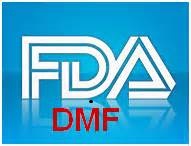Well, we did not have to wait long after the blog post on upcoming Guidance documents for the DMF Completeness Assessment (CA) Guidance to issue (here). The document begins with a concise discussion of the GDUFA requirements for DMFs submitted to support approval of generic applications, including the requirements for fees, what triggers a fee and an admonishment (or recommendation) for DMF holders to submit their DMF at least 6 months prior to the filing of an ANDA. This will permit FDA sufficient time to undertake the completeness assessment. In addition, FDA strongly encourages DMF holder to submit their submissions in the eCTD format.
FDA outlines what they are looking for in a CA and reiterates that this review is not replace the full scientific review. The elements listed are:
Is the DMF active?
Has the fee been paid?
Has the DMF been previously reviewed?
Does the DMF pertain to a single API?
Does the DMF contain certain administrative information?
Does the DMF contain all the information necessary to enable a scientific review?12
Is the DMF written in English?
To facilitate industry’s understanding of the CA, they have included a DMF CA checklist (an 8 page document) as an appendix to the guidance. For complex APIs, FDA also notes that it expects to see information that can support the fact that the API in the DMF is the “same as” that contained in the reference listed drug.
The Guidance goes on to discuss its expectations for each of the elements listed above and also outlines what happens based on the outcome of the CA and provides a list of definitions it uses in the document.
To assure your DMF gets listed on the DMF “available for reference” list (a good selling point for an API supplier), make certain you pay close attention to the information in this Guidance document.




